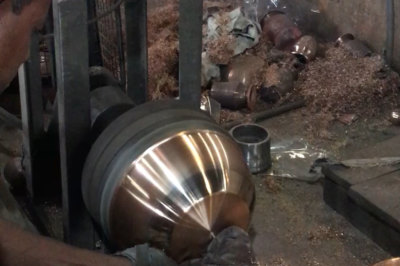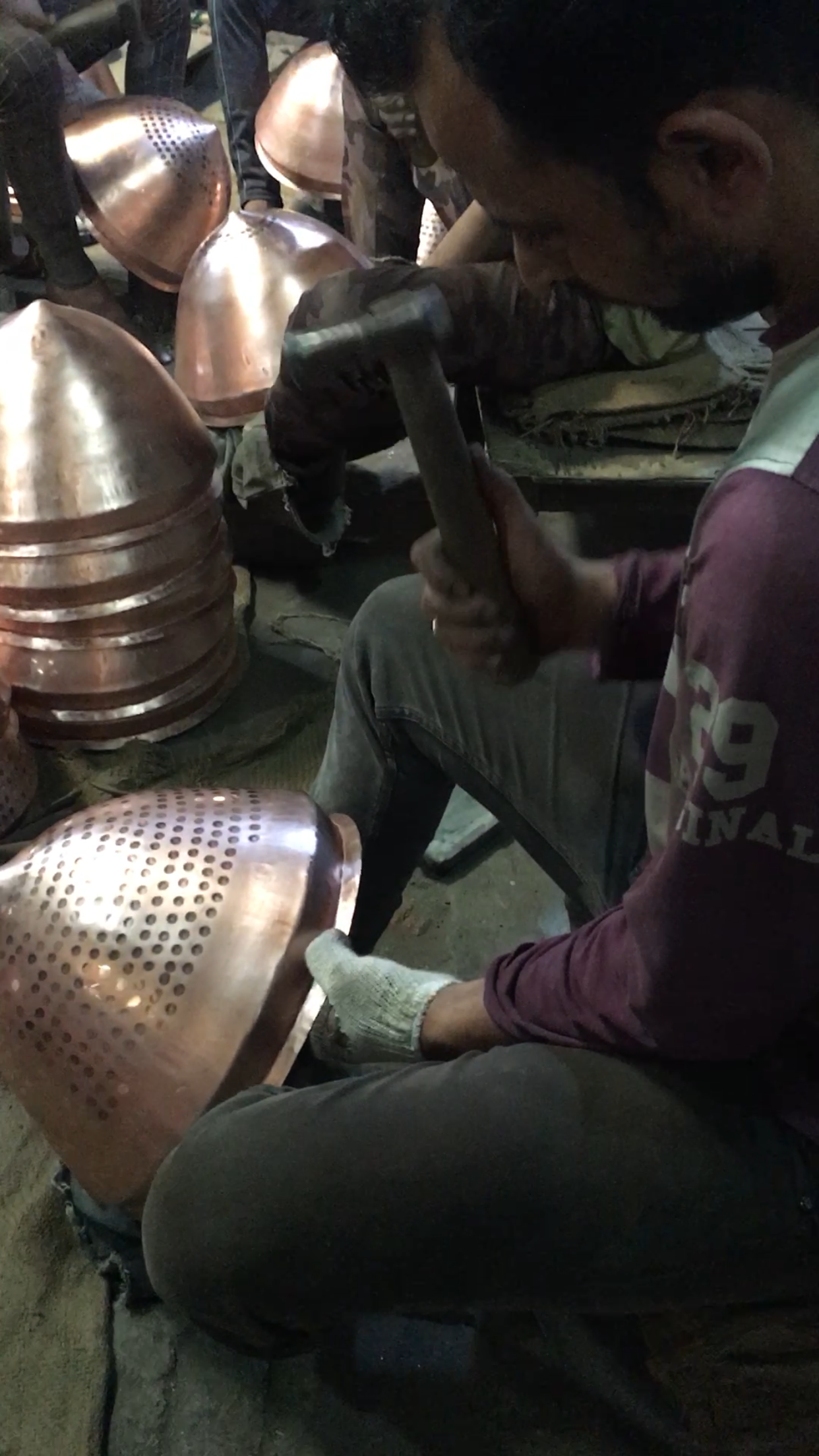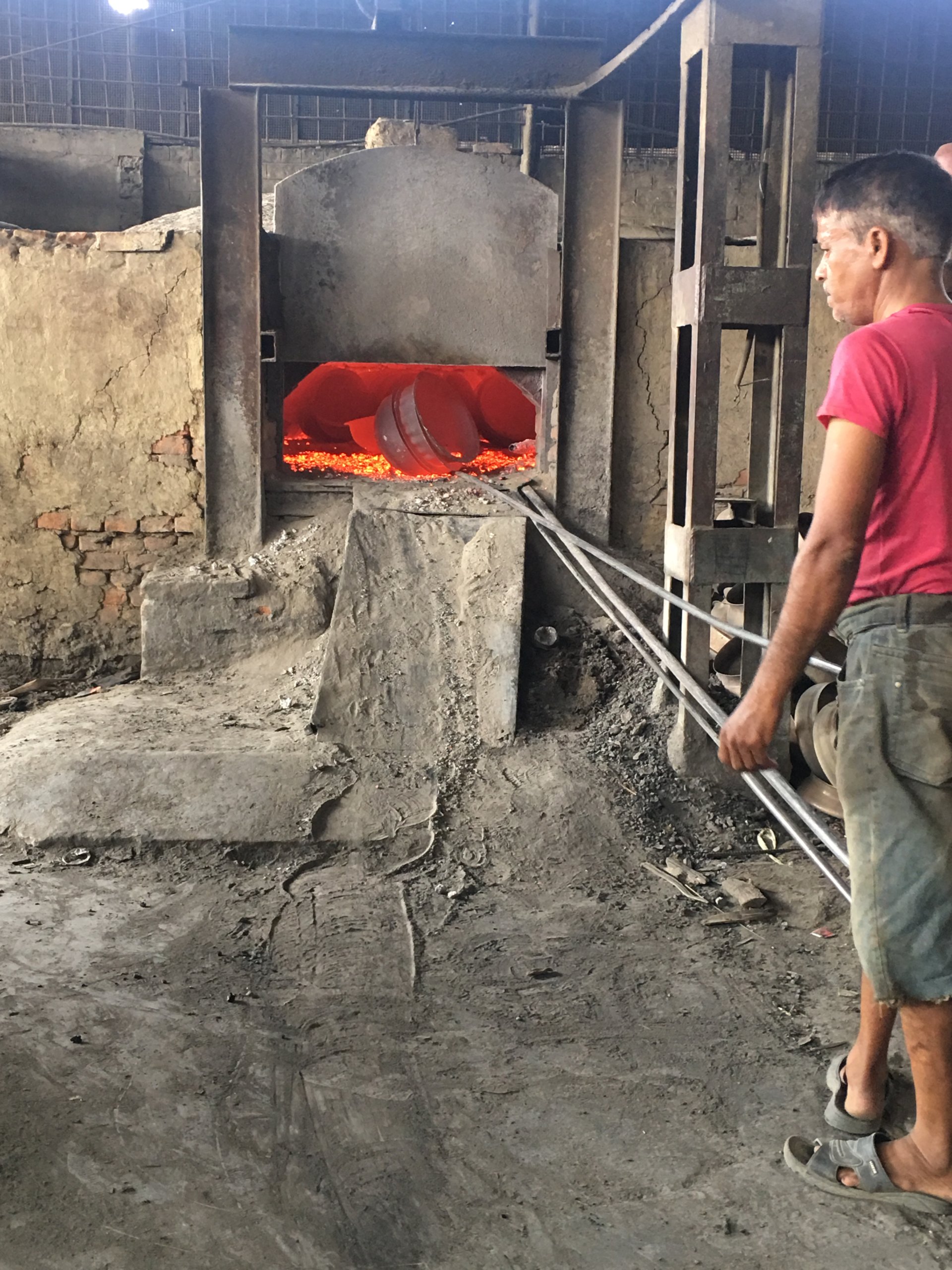Hope for Handwork with Hanuman Metals

Nest’s Artisan Guild highlight series focuses on our community of makers, craftspeople, and entrepreneurs, introducing you to their stories in their own words. We’re excited to feature the voice of Nidhi Podar of Hanuman Metals.
 Kansa, a mixture of copper and tin, reflects the legacy of Nepal’s master craftsmen, “The Tamrakars” who tirelessly beat malleable metal into beautiful artifacts sitting in the terrains of the Himalayas. The “pehchaan’’ of handmade kansa is the brilliance of its warm golden glow and the quality of its bell like sound known as “Lehar”. Bell Metal making is purely a creative talent, a wonderful blend of arts and science. The craft is over 2000 years old, passed down from one generation to another. A normal day of a kansa artisan begins as early at 3am to start the process as the heat involved is so high that they prefer to work before the sun rises.
Kansa, a mixture of copper and tin, reflects the legacy of Nepal’s master craftsmen, “The Tamrakars” who tirelessly beat malleable metal into beautiful artifacts sitting in the terrains of the Himalayas. The “pehchaan’’ of handmade kansa is the brilliance of its warm golden glow and the quality of its bell like sound known as “Lehar”. Bell Metal making is purely a creative talent, a wonderful blend of arts and science. The craft is over 2000 years old, passed down from one generation to another. A normal day of a kansa artisan begins as early at 3am to start the process as the heat involved is so high that they prefer to work before the sun rises.
The process begins with alloys in a traditional clay furnace and pouring the molten metals into small earthen moulds to make bronze ingots. Then begins the tedious and extremely skilled process of repeated heating and beating. What is fascinating is the clock-like coordination of the groups of 3-4 artisans who rhythmically beat the heated ingot on a stone platform, with one person rotating the ingot piece to acquire the even dents. Kansa is very brittle so it needs to be frequently heated during the hammering process so the metal remains soft for further shaping.
Gradually, new metal ingots are placed in between the initial half-hammered ingots to produce more bowls using less time and energy to achieve the same size and shape. The next stage is shaping and scraping. The artisans give definition to the pieces by individually hammering them to ensure uniform thickness. Scraping adds a shine to the utensils—the base of the bowl is heated and stuck to the face-plate on the lathe machine using hot melted tar. As the bowl rotates on the lathe, the scraping knife is held firmly to scrape off the top layers, revealing the underlying warm gold utensil.
Their craft is not infrastructure or equipment intensive. Artisans simply need a fireplace and their tools are locally sourced or simply made themselves. Likewise, the alloys are sourced from local metal scrap. Their equipment includes:
• Hatudi: Hammers used in beating the metal.
• Sandasi: Pincers used in picking and holding the hot metal pieces.
• Ruha: File is used to smooth edges of the metal utensils.
• Lihini: used in scraping the metal utensil to even and level the surface.
• Kunda: Lathe is a rotatory machine equipped with a motor to generate constant motion for finishing a metal utensil.
• Koi: Crucibles made out of clay graphite which is used like a container while melting the metal with high temperatures.
• Brass Wire Sponge: It is used for buffing the surface of the scraped metal utensil.
• Bhatti: Clay furnace
Dhaatu, a premium metal serveware brand founded in 2019, in partnership with Hanuman Metals, is empowering over 120 local artisans to contemporize and professionalize Nepal’s metal-craft creations for an international audience. We have a team of designers and technical managers who have worked with international stores, have knowledge of aesthetics, and requirements for exporting to developed countries. We also have an office in India that helps for sourcing raw materials and streamlining logistics. Though our creations are essentially handmade, we modify the tools using simple techniques to increase efficiency, adopt energy saving practices to maintain costs and regularly monitor the processes to improve the finish of our pieces.
However, working in the handicraft industry has its challenges. Convincing the artisans to alter their designs or process is extremely challenging as it is less of a process or technical change but more of a mindset change. Moreover, for the craftsmen, their social norms and family obligations take priority over their personal and financial wellbeing which hinders the efficiency of the company. It is common for them to take weeks off for a festival, wedding, or death in the family regardless of what it costs them in terms of business.
Another challenge Nepal faces in preserving this craft is that the future generation does not take pride in becoming artisans and are looking for professional skilled jobs as they feel that is more financially fulfilling. Hence convincing and inspiring the younger generation of the artisans to learn the skill, is one of the lingering questions that is unanswered.
This craft cannot be taught through training. It is passed down through generations from one artisan to the next.

To overcome the social challenges many times handicraft companies, look at mechanizing some of the processes. However, looking at the variance between the two the consumers prefer to buy the hand beaten ones. A famous ayurvedic scientist Charakta in the 5th Century determined that eating food in kansa vessels balances the body’s PH level by making it alkaline. The Nepalese use these utensils not just for eating but for auspicious rituals and religious offerings. While kansa as ritual items continues to make its presence felt, there’s a definite decline in its use as household utensils, due to the availability of more modern kitchenware. Dhaatu seeks to marry the unexplored tradition and beauty of the kansa craft of Nepal with international luxury through its collection of handmade serveware, and create sustainable local products that can blend into modern homes and take Nepal’s ancient ayurvedic wisdom to an international platform.